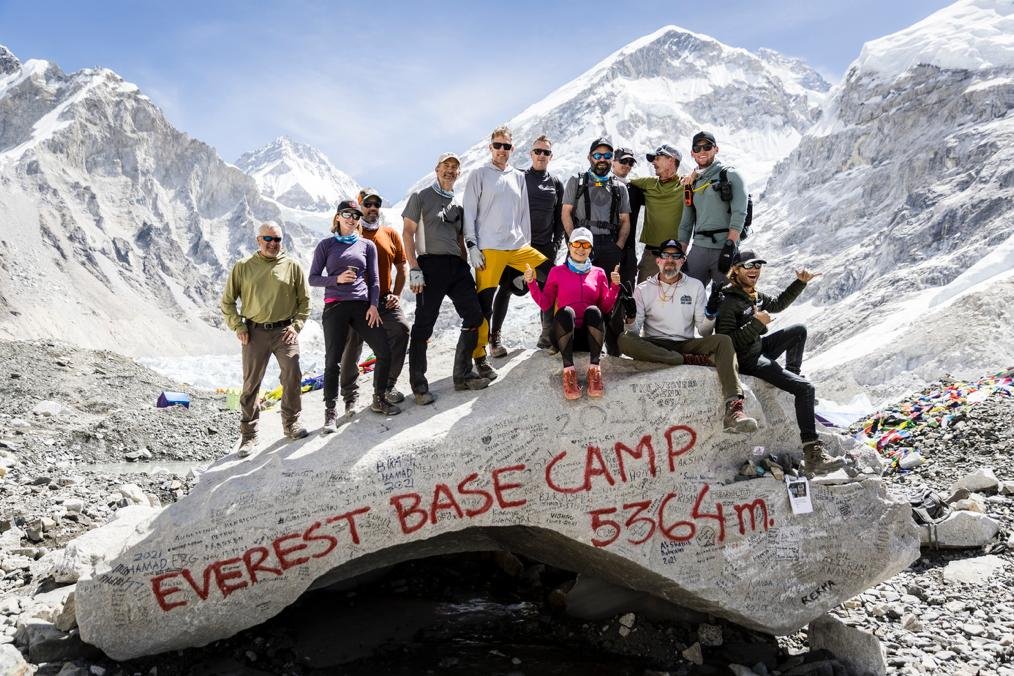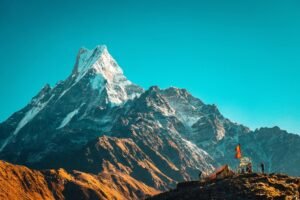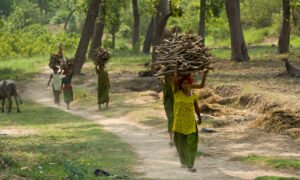Mount Everest, the highest peak in the world at 8,848 meters (29,029 feet), stands as a beacon for adventurers and mountaineers from around the globe. The journey to its base camp is one of the most sought-after trekking experiences, offering a blend of natural beauty, cultural richness, and personal challenge. This article delves into the allure of the Mount Everest Base Camp trek, providing a comprehensive guide to what makes this trek the ultimate adventure.
Introduction to the Everest Base Camp Trek
The Everest Base Camp (EBC) trek is not merely a walk; it is a journey through time, nature, and culture. Located in the Khumbu region of Nepal, the trek offers stunning landscapes, diverse flora and fauna, and the chance to witness the daily lives of the Sherpa people, known for their remarkable mountaineering skills.
Historical Significance
The history of Everest and its base camp is steeped in tales of triumph and tragedy. The trek follows in the footsteps of legendary climbers like Sir Edmund Hillary and Tenzing Norgay, who made the first successful ascent of Everest in 1953. Their legacy is palpable throughout the journey, from the Hillary Suspension Bridge to the Tengboche Monastery, where climbers seek blessings before their ascent.
The Route
The standard EBC trek typically begins with a thrilling flight from Kathmandu to Lukla, a small town with a notorious airport perched on a mountainside. From Lukla, the trek follows a well-trodden path through Phakding, Namche Bazaar, Tengboche, Dingboche, Lobuche, and finally to Gorak Shep and Everest Base Camp. The return journey retraces the steps back to Lukla.
The Trekking Experience
Day-by-Day Itinerary
Day 1: Arrival in Kathmandu
Most treks begin with an arrival in Kathmandu, the capital of Nepal. This bustling city is a melting pot of cultures and a gateway to the Himalayas. Trekkers spend a day or two here preparing for the journey, exploring UNESCO World Heritage sites like Swayambhunath (Monkey Temple) and Boudhanath Stupa.
Day 2: Kathmandu to Lukla Flight and Trek to Phakding
The adventure begins with an early morning flight to Lukla, often described as one of the most thrilling flights in the world. Upon arrival, trekkers start their journey with a gentle walk to Phakding, a small village along the Dudh Kosi River.
Day 3: Phakding to Namche Bazaar
The trail from Phakding to Namche Bazaar is a mix of steep inclines and suspension bridges over gushing rivers. Namche Bazaar, the largest town in the Khumbu region, serves as an acclimatization stop. It’s a vibrant hub with markets, cafes, and stunning views of the surrounding peaks.
Day 4: Acclimatization Day in Namche Bazaar
To adjust to the altitude, trekkers spend an extra day in Namche. Activities include short hikes to Everest View Hotel or the nearby Khumjung village. These excursions provide breathtaking views of Everest, Lhotse, and Ama Dablam.
Day 5: Namche Bazaar to Tengboche
The trek from Namche to Tengboche is known for its scenic beauty, passing through pine forests and rhododendron groves. Tengboche is home to the famous Tengboche Monastery, the largest in the region, offering panoramic views of Everest and other towering peaks.
Day 6: Tengboche to Dingboche
The trail to Dingboche takes trekkers above the tree line, offering a stark but beautiful landscape of snow-capped peaks and barren terrains. Dingboche is a picturesque village with stone-walled fields and serves as another acclimatization point.
Day 7: Acclimatization Day in Dingboche
Another acclimatization day allows trekkers to explore the surrounding areas, including a hike to Nagarjun Hill or Chukhung Valley, both offering stunning vistas and vital acclimatization.
Day 8: Dingboche to Lobuche
The trek to Lobuche is marked by the Thukla Pass, a ridge adorned with memorials for climbers who lost their lives on Everest. The trail offers close-up views of peaks like Pumori and Nuptse.
Day 9: Lobuche to Gorak Shep and Everest Base Camp
This is the most anticipated day, as trekkers reach Gorak Shep, the last settlement before EBC. After a short rest, the final push to Everest Base Camp begins. The base camp itself offers a dramatic view of the Khumbu Icefall and the surrounding giants. Trekkers then return to Gorak Shep for the night.
Day 10: Gorak Shep to Kala Patthar and Descent to Pheriche
A pre-dawn hike to Kala Patthar, a vantage point offering the best views of Everest, is a highlight of the trek. The panoramic view of the sunrise over Everest and neighboring peaks is unforgettable. Afterward, the descent to Pheriche begins, marking the start of the return journey.
Days 11-14: Return to Lukla and Flight to Kathmandu
The descent retraces the route back through Pheriche, Tengboche, Namche, and finally to Lukla. The return journey offers a chance to reflect on the achievement and take in the beauty of the Khumbu one last time. A flight back to Kathmandu concludes the trek.
Challenges and Rewards
The EBC trek is a physically demanding journey, requiring trekkers to walk for several hours each day over rugged terrain. Altitude sickness is a significant concern, making acclimatization days crucial. Despite these challenges, the trek rewards adventurers with unparalleled natural beauty, cultural insights, and a profound sense of accomplishment.
Physical Preparation
Proper physical preparation is essential for a successful trek. Trekkers should engage in regular cardiovascular exercises, strength training, and practice hikes with a loaded backpack. Acclimatization to altitude can be aided by spending time at high altitudes before the trek and staying hydrated throughout the journey.
Mental Preparation
Mental resilience is equally important. The trek can be mentally taxing, with long days of walking, unpredictable weather, and basic accommodations. Maintaining a positive attitude, setting realistic expectations, and being flexible with plans are key to enjoying the experience.
Cultural Immersion
One of the unique aspects of the EBC trek is the opportunity to immerse oneself in Sherpa culture. The Sherpas, renowned for their mountaineering skills, are warm and hospitable. Visiting monasteries, interacting with locals, and experiencing traditional Sherpa life add a rich cultural dimension to the trek.
Sherpa Hospitality
The Sherpa people are known for their hospitality and resilience. Staying in teahouses run by Sherpa families offers a glimpse into their daily lives. These teahouses provide basic but comfortable accommodations, hearty meals, and a warm, welcoming atmosphere.
Buddhist Heritage
The trek is steeped in Buddhist heritage, with numerous monasteries, chortens (stupas), and prayer wheels along the way. The Tengboche Monastery, in particular, is a spiritual highlight. Trekkers often participate in prayer ceremonies and seek blessings from the monks for a safe journey.
Natural Beauty
The trek to Everest Base Camp traverses some of the most breathtaking landscapes in the world. From lush forests and terraced fields to glacial moraines and towering peaks, the natural beauty is awe-inspiring.
Flora and Fauna
The lower regions of the trek are rich in biodiversity, with rhododendron forests, pine trees, and a variety of wildlife, including the elusive snow leopard, Himalayan tahr, and colorful pheasants. As the altitude increases, the landscape becomes more barren, but no less beautiful, with stark rock formations and glacial valleys.
Majestic Peaks
Throughout the trek, trekkers are treated to stunning views of some of the highest peaks in the world. Mount Everest, Lhotse, Nuptse, Ama Dablam, and Pumori dominate the skyline, offering a constantly changing panorama that inspires and humbles.
Practical Information
Best Time to Trek
The best times to trek to Everest Base Camp are pre-monsoon (March to May) and post-monsoon (September to November). These periods offer the most stable weather conditions, with clear skies and moderate temperatures. The pre-monsoon season is particularly beautiful, with blooming rhododendrons adding color to the landscape, while the post-monsoon season offers crisp, clear views of the mountains.
Permits and Regulations
Trekkers need two main permits for the EBC trek: the Sagarmatha National Park Permit and the Khumbu Pasang Lhamu Rural Municipality Permit. These permits help fund conservation efforts and support local communities. Additionally, trekkers are required to register with the Trekkers’ Information Management System (TIMS).
Gear and Packing
Proper gear is essential for the trek. Key items include:
Trekking boots: Sturdy, comfortable, and broken-in.
Clothing: Layered clothing to adapt to changing temperatures. Include thermal base layers, insulating mid-layers, and a waterproof outer layer.
Sleeping bag: Rated for temperatures as low as -10°C (14°F) or lower.
Backpack: Comfortable with a good support system, ideally 50-60 liters.
Trekking poles: Useful for stability on uneven terrain.
First aid kit: Including altitude sickness medication, blister treatment, and basic medical supplies.
Sunscreen and sunglasses: To protect against the strong UV rays at high altitudes.
Water purification: Tablets or a filtration system to ensure safe drinking water.
Health and Safety
Altitude sickness is a primary concern on the EBC trek. Symptoms include headaches, nausea, dizziness, and shortness of breath. To minimize the risk, trekkers should:
Ascend slowly: Follow the acclimatization schedule and avoid rapid ascents.
Stay hydrated: Drink plenty of water and avoid alcohol.
Know the symptoms: Be aware of the signs of altitude sickness and seek immediate medical attention if symptoms worsen.
Medication: Consider carrying Diamox (acetazolamide) for altitude sickness prevention and treatment, but consult a doctor beforehand.
Hiring Guides and Porters
Hiring a local guide and/or porter can greatly enhance the trekking experience. Guides provide valuable insights into the culture, history, and nature of the region, while porters help carry the load, allowing trekkers to enjoy the journey more comfortably. Hiring locals also supports the local economy and promotes sustainable tourism.
The trek to Everest Base Camp is a once-in-a-lifetime adventure that challenges the body and mind while offering unparalleled rewards. From the thrill of walking in the footsteps of mountaineering legends to the breathtaking beauty of the Himalayas and the rich cultural experiences along the way, the EBC trek is truly the ultimate trekking experience.
Whether you are an experienced trekker or a first-time adventurer, the journey to Everest Base Camp promises to be an unforgettable experience. With proper preparation, a spirit of adventure, and a respect for the environment and local culture, trekkers can embark on this incredible journey and create memories that will last a lifetime.
As the world changes and new adventures emerge, the trek to Everest Base Camp remains a timeless classic, a testament to the enduring allure of the highest mountain in the world and the indomitable spirit of those who seek to experience its majesty.





